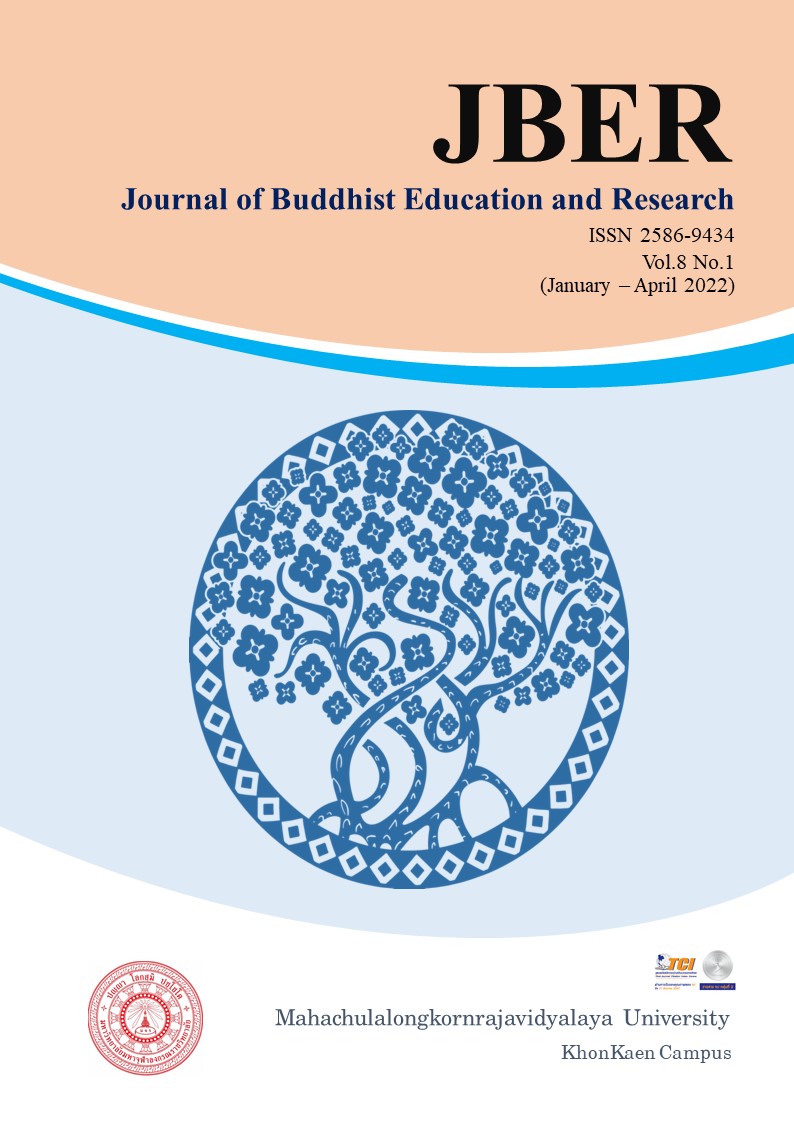THE BUDDHIST COMMUNICATION FOR THE LIFE QUALITY DEVELOPMENT
Keywords:
Buddhist communication, communication for life-quality developmentAbstract
The objective of this thematic paper were to study a concept of the Buddhist communication in Tipitaka and to analyze a concept of communication and life-quality development.
A result of this study was found that This era is the new media era. with the fusion of various media together and it is extremely necessary to communicate in a Buddhist way, that is, relying on dharma principles as a regulator or accompaniment in order to improve the quality of life of the audience for the principles that need to be embraced in communication for the life-quality development was found that there was Dhamma applied to the communication. Dhamma supported the sender's quality was good friendship, living without bias, ten methods of making merit and knowledge and good behaviour. Dhamma for high qualities of a message was solitude (a message of living), Four Noble Truths (a message of attaining truths), five aggregates (a message of learning the elements, conditions and development of life), objects of sympathy (a message of living together), states of conciliation (a message of harmony), virtues of the righteous (a message of growing the skill of life), and Threefold Training (a message of developing the alternative life). Dhamma for the high quality of the communicational medium was sense-organs and sense-objects. Dhamma for the receiver was proper attention (a thinking process) and mindfulness (knowing a message clearly) from all the principles if used for communication It is believed that the recipient will improve their quality of life. in accordance with the threefold principles and bring benefits to society as a whole
References
ชาย สัญญาวิวัฒน์ และ สัญญา สัญญาวิวัฒน์. (2551). การบริหารจัดการแนวพุทธ. พิมพ์ครั้งที่ 2. กรุงเทพฯ: โรงพิมพ์แห่งจุฬาลงกรณ์มหาวิทยาลัย.
ทรงวิทย์ แก้วศรี. การศึกษาวิเคราะห์ยุทธวิธีในการประกาศศาสนาของพระพุทธเจ้า. กรุงเทพฯ: บริษัท ธรรมสาร จำกัด.
พระธรรมปิฎก (ป.อ. ปยุตฺโต). (2546). ทุกข์สำหรับเห็น แต่สุขสำหรับเป็น. พิมพ์ครั้งที่ 9. กรุงเทพฯ:ธรรมสภา.
พระพรหมคุณาภรณ์ (ป.อ.ปยุตฺโต). (2539). การสื่อสารเพื่อเข้าถึงสัจธรรม. กรุงเทพฯ: ธรรมสภา.
พระมหาสมบูรณ์ วุฑฺฒิกโร. (2546). พระพุทธศาสนาเพื่อสังคม : ศึกษาการตีความศีลห้าของเครือข่ายพุทธศาสนิกเพื่อสังคมนานาชาติ. สารนิพนธ์ปริญญาพุทธศาสตรดุษฎีบัณฑิต. บัณฑิตวิทยาลัย : มหาวิทยาลัยมหาจุฬาลงกรณราชวิทยาลัย.
พระมหาหรรษา ธมฺมหาโส (นิธิบุณยากร),รศ.ดร. (2557). พระพุทธศาสนากับวิทยาการสมัยใหม่. พิมพ์ครั้งที่ 3. กรุงเทพฯ: โรงพิมพ์มหาจุฬาลงกรณราชวิทยาลัย.
พุทธทาสภิกขุ. (2526). ฟ้าสางระหว่าง 50 ปี ที่มีสวนโมกข์. กรุงเทพฯ: การพิมพ์พระนคร.
มหาวิทยาลัยมหาจุฬาลงกรณราชวิทยาลัย. (2539). พระไตรปิฎกภาษาไทยฉบับมหาจุฬาลงกรณราชวิทยาลัย. กรุงเทพฯ: โรงพิมพ์มหาจุฬาลงกรณราชวิทยาลัย.
มหาวิทยาลัยสุโขทัยธรรมาธิราช. (2563). ความรู้เบื้องต้นเกี่ยวกับสื่อมวลชน. พิมพ์ครั้งที่ 3. กรุงเทพฯ: สำนักพิมพ์มหาวิทยาลัยสุโขทัยธรรมาธิราช.





